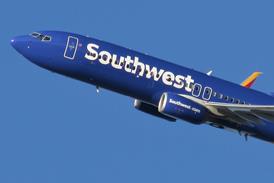Ian Verchere
Phantom Works - Boeing's research and development unit - will this month roll out its first demonstrator version of an Unmanned Combat Air Vehicle (UCAV) concept and commence flight operations next year. George Muellner, vice-president and general manager, says: "UCAV can significantly increase the effectiveness and survivability of manned combat aircraft while significantly lowering the overall cost of combat operations."
Phantom Works is producing two systems to demonstrate key technologies, operational capabilities and affordability benefits for performing dangerous combat missions. Flight testing the new system begins in 2001 and will be closely observed by US and European military tacticians. The attractiveness of unmanned fighters stems from the removal of the human factor - notably loss of life - from flight operations enabling strategists to focus technology on offensive capability and away from pilot survival.
Muellner, a former fighter pilot and lieutenant-general in the USAF procurement arm, describes these and other projects on which Phantom Works is currently engaged as shaping the future of aerospace.
"We see a future with aircraft and spacecraft that are safer, more capable and more reliable than today's," he explains, "and that can be designed, produced and maintained in much less time and for much less money."
Technology
Boeing's Blended Wing Body is another project which could point the way ahead for next-generation air transporters. Phantom Works has been conducting research on this technology since the early 1990s, says Muellner, "and plans to complete and flight test a 14% model in 2002." By integrating engines, wing and body into a single lift surface, a blended wing-body transport design promises significant aerodynamic and structural efficiencies "that would translate into greater range and fuel economy, lower manufacturing costs, and greater reliability and safety," he says. The absence of windows on passenger versions of the design has been resolved by poly-directional video images projected onto seatback screens, he said. Concerns about emergency passenger evacuation in an aircraft that could be appreciably larger than existing jumbo airliners would be addressed by installing wide aft doors like those in large military transports. With an annual R&D budget of $1.2 billion from its own resources plus additional funding from other joint-venture activity, Phantom Works employs about 4,000 people across the US "on almost 500 advanced technology projects." They focus on providing innovative breakthroughs in performance, quality and cost to Boeing commercial aircraft, space, communications and defence customers worldwide.
Muellner says the USAF has shown great interest in another Boeing idea for an Air-Launch System (ALS). This cheap, launch-on-demand solution is designed to be carried aloft on the back of a Boeing 747 from which it separates and launches its military or conventional payload into orbit. Flight testing of the new system is scheduled to begin in 2001.
Experiments
Other futuristic experiments on which Boeing's Phantom Works is active include the X-37 Experimental Reusable Space Plane "to make space transportation as available, affordable and reliable as aircraft travel is today," he says. Another idea gaining credibility is the Canard Rotor/Wing which performs as both a helicopter and as a fixed-wing aircraft and is due to begin flight-testing in 2001.
Source: Flight Daily News























